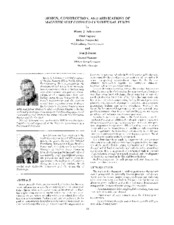| dc.description.abstract | Since the early 1970s, the environmental protection has become more and more important when designing industrial plants and, today, this question is always first in any public discussion. Thus, the engineering profession ought to face the problems of environmental protection, and offer solutions in order to key pollution to a bare minimum. In this regard, attention should also be paid to environmental laws which are becoming increasingly restrictive with regard to leakage. Examples are the aggravated injunctions by government rules in West Germany and California, concerning the design pumps, respectively, of the shaft seals when transporting hydrocarbons, especially for fluorine chloride hydrocarbon liquids, as methylene chloride trichloroethylene and perchlorethylene. In view of environmental pollution, the weakest link of centrifugal pumps is the shaft sealing, because mechanical seals always have some level of leakage. The average leakage rate of a mechanical seal is 3.0 to 8.0 cm³/h. This value may seem very low at first. However, considering the big chemical processing plants having thousands of pumps in operation, the atmosphere penetration leakage rate grows remarkably. Problems are caused by formation of dangerous explosive mixtures and those problems increase when toxic or bad smelling gases and vapors penetrate and endanger maintenance personnel. In order to avoid evaporation of the fluid film between the mechanical seal faces, additional cooling is required when handling products with a vapor pressure above the atmosphere pressure at operating temperature. When handling products which recrystallize in the atmosphere, a suitable quench connection must be provided. Such auxiliary seal devices should be provided with additional fittings and checking equipment. The affected liquid must be refined and treated. Past efforts have been made for improving the performance of mechanical seals and meeting these requirements. An example of this is the double acting mechanical seal of “tandem design” and of “back-to-back-design” with the relevant auxiliary equipment. But, it appears that mechanical seals in conventional industrial pumps have nearly reached their developmental limits for increased reliability and lower leakage. Sealless pumps are the only pumps with zero leakage, because they have no seals. | en |


